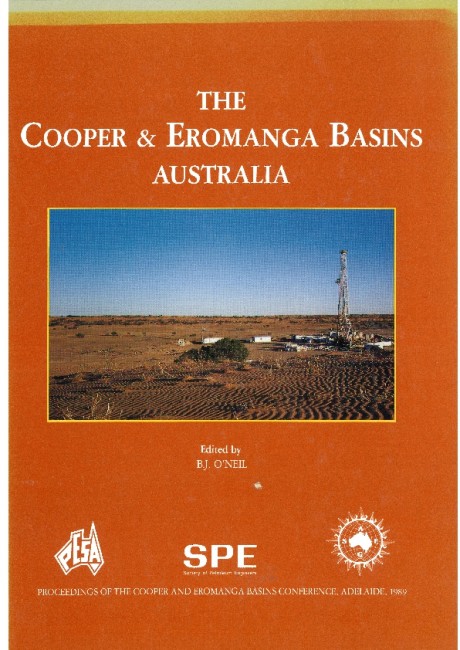Publication Name: The Cooper & Eromanga Basins Australia
Authors: J.D. Gorter, V.A. Gostin and P.S. Plummer
Date Published: June 1989
Number of Pages: 30
Reference Type: Book Section
Abstract:
Since the first regional seismic surveys in the Eromanga Basin of south-west Queensland in the early 1980s, theTookoonooka Complex has been recognised as a highly structured buried terrain of late Jurassic to Early Cretaceous age that is about 55 km wide. As early as 1982, seismic data from the west of the Tookoonooka area were tentatively interpreted to represent an astrobleme - a cosmic impact scar. Later, submarine channelling induced by epeirogenic uplift of the shelf was invoked as having produced the feature. Since the drilling of Tookoonooka-1 in 1984, however, the structure has been re-interpreted as a centre of volcanoclastic activity consisting of a large caldera and complex central dome.
The totally sedimentary nature of all deposits in the Tookoonooka and surrounding areas, however, led to reexamination of evidence relevant to the genesis of the Complex. Evidence supportive of igneous, structural and synsedimentary origins was found wanting in all cases. It was found, however, that the concentric arrangement of anticlines and synclines, the raised central core of Early Palaeozoic metamorphosed sediments coinciding with a gravity low, and the presence of a radial, saucer-shaped disruption boundary separating normal Eromanga succession below from highly disturbed fallback breccia above, all testified to a meteoritic impact origin. Further
petrographic support includes the presence of both glass matrix and fragments, and shock lamellae in quartz grains within the fallback breccia, the latter feature being diagnostic of an impact origin.


